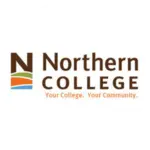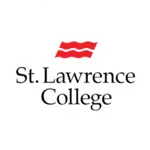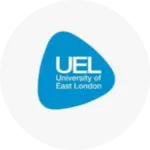Study in USA

Overview
With its world-class universities, innovative research possibilities, and diversified learning environment, the United States is one of the most popular places to pursue higher education. With thousands of courses in every subject and an adaptable educational system, students can customize their academic journey to meet their objectives. The United States also provides promising job opportunities, a dynamic campus life, and exposure to foreign cultures. Whether you’re pursuing an undergraduate, postgraduate, or research program, studying in the United States can offer up a world of opportunities.
Why Study in Canada?
World-class education
Canada offers globally recognized degrees and diplomas, with top-ranking universities known for academic excellence and research opportunities.
Safe & welcoming
Canada is known for its low crime rate and inclusive society, creating a safe and friendly environment for international students.
Multicultural society
Canada embraces diversity, with people from all over the world, allowing students to experience various cultures and feel at home.
Research opportunities
Canadian universities emphasize research and innovation, offering students access to cutting-edge facilities and projects across various fields.
Work & PR options
Compared to other popular study destinations, Canada offers quality education at relatively lower tuition fees, making it a cost-effective choice.
Affordable tuition
International students can work part-time during studies and full-time after graduation, with clear pathways to permanent residency through programs like Express Entry.
High living standards
Canada consistently ranks high in quality of life, offering excellent healthcare, infrastructure, and a clean environment for a comfortable student life.
Affordable tuition
From mountains and lakes to forests and coastlines, Canada’s stunning natural beauty offers students endless opportunities for travel and outdoor adventures.
Why Study in USA?
Top destination for academic excellence
Technological innovation and research
Flexible and student-centered education system
Merit-based scholarships and financial aid
Opportunity to work part-time through on-campus jobs
QUALIFICATIONS OFFERED
- First Professional Degree
- Diploma
- Associate Degrees
- Applied Degrees
- Bachelor’s Degree
- Master’s Degree
- Doctorate
TEST REQUIREMENT
- TOEFL or IELTS scores as a proof of English proficiency. Depending upon the institution, the score requirements may vary between 80-100 for TOEFL and 6.0 – 7.0 bands in IELTS.
- For MBA admission a good score in GMAT is required.
EDUCATION COST
TUITION COST
- Diploma & Advanced Diploma Courses cost range from CAD$11,000 – CAD$13,000 per year depending on the course.*
- Bachelor’s Degrees cost range from CAD$13,000 – CAd$19,000 per year for most under-graduate degrees*
- Post-graduate Degrees cost ranges from CAD$12,000 and ranges up to CAD$22,000*
* Fees given are of informative nature may vary from university to university
TUITION COST
Approximately CAD 10000 for 1st year.
WORK RIGHTS & STAY BACK POST STUDY
TUITION COST
- Part time work right : Off campus 20 hours per week – 40 hours per week during vacation
- No limit for on campus work
- Upto 3 years stay back for ( 2 years study )or equal to the course duration if it is less than 2 years
INTAKE
- January
- May
- September
Universities















The American educational system is renowned for its adaptability, enabling students to customize their academic paths by choosing from a variety of programs and courses. Institutions include public and private universities, community colleges, and liberal arts colleges that grant degrees ranging from associate to PhD. In the United States, fall (August) and spring (January) semesters see the largest intakes. With a focus on critical thinking, creativity, and research, the United States continues to be a popular choice for international students.
International students typically need to prove their English language skills to study in the United States. The most generally accepted exams are the IELTS (minimum overall band score of 6.0-6.5) and the TOEFL iBT (minimum score of 70-80), though the requirements vary by institution and program level. Students may be excluded from language tests if they have previously attended English-medium institutions, subject to university approval.
Understanding the Canadian Education System
Canada’s education system provides a varied selection of programs through universities, colleges, and technical institutes, catering to students with a variety of employment goals. An exceptional aspect of the Canadian educational system is its focus on experiential learning, which enables students to obtain practical experience through research partnerships, co-ops, and internships. Additionally, the nation offers overseas students the chance to work both during and after their studies, which lowers the cost of education and focuses on careers. With a reputation for competence, inclusivity, and a solid student support system, Canada remains a popular choice for people seeking a high-quality education and potential employment opportunities.
Canadian universities offer three main intakes for international students: January, May, and September.
Language Requirements
International students need to prove English competence on standardized tests such as the TOEFL or IELTS to study in Canada. Depending on the school, the necessary scores can vary, but generally speaking, they fall between 80 and 100 on the TOEFL and between 6.0 and 7.0 on the IELTS. A competitive GMAT score is frequently needed as part of the admissions process for MBA candidates. Institutions may have particular prerequisites, therefore, students must check the qualifying criteria of their preferred program before applying.
Do you have Questions ?
Find answers to common queries about our services, processes, and policies. If you need further assistance, feel free to reach out.
1. What are the most common intakes for studying in the USA?
The United States has three main intakes: fall (August), spring (January), and summer (May), with fall being the most common among foreign students.
2. What language proficiency is required to study in the United States?
Most institutions need confirmation of English ability through examinations such as IELTS (6.0-6.5), TOEFL (70-80), based on the degree and institution.
3.Does studying in Canada require the TOEFL or IELTS?
Yes, evidence of English proficiency is required by the majority of institutions. Depending on the university and program, the necessary scores usually fall between 80 and 100 on the TOEFL and between 6.0 and 7.0 bands on the IELTS.
4.Do foreign students have access to scholarships in the United States?
Yes, international students on F-1 visas are allowed to work up to 20 hours per week on campus during academic sessions and full-time during breaks. Off-campus employment necessitates specific permission.
5.What are the popular courses international students choose in the USA?
STEM (Science, Technology, Engineering, Math), Business, Computer Science, Data Analytics, and Health Sciences are among the top choices for international students.
6.How much time can I spend in the United States after earning my degree?
Students may stay for up to 12 months under Optional Practical Training (OPT), with STEM graduates eligible for a 24-month extension, providing for a total of 36 months of post-study employment.
